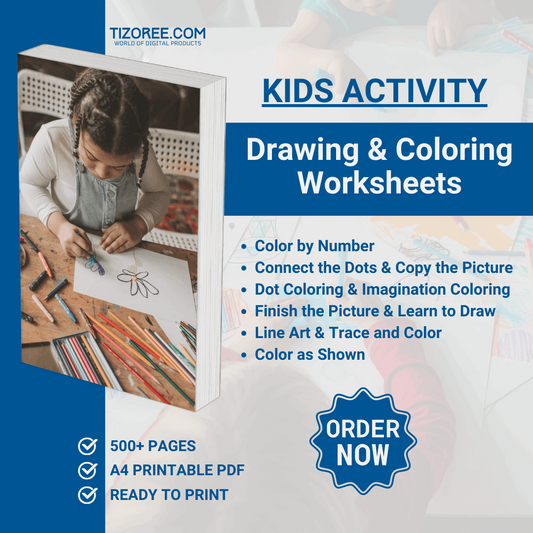10 Easy Science Experiments That Will Amaze Kids
Share
Engaging children in science can be both fun and educational. Simple experiments using household items can spark curiosity and inspire a love for learning. In this article,
you will discover ten easy science experiments that are not only entertaining but also easy to conduct. Each experiment is designed to be safe and accessible, making them perfect for kids of all ages.
1. Insta Cloud in a Bottle
Creating an instant cloud is a fascinating way to demonstrate the principles of air pressure. This experiment requires just a few simple items you likely have at home.
- Empty water bottle
To begin, twist the empty water bottle. This action compresses the air inside, pushing the molecules together. When you open the bottle, the pressure is released, and the air expands, creating a cloud-like effect. It's a simple yet impressive demonstration of air pressure that will surely amaze kids.
2. Imploding Cans
This experiment shows the power of atmospheric pressure in a dramatic way. By using common kitchen items, you can create a surprising imploding effect.
- Empty cans
- Bowl of ice water
- Tongs
- Stove
Start by filling the cans with a small amount of water and heating them on the stove. Once the water boils and steam starts to escape, carefully tip the can into the bowl of ice water using tongs. The sudden temperature change causes the can to implode, demonstrating the effects of pressure and temperature in a visually striking manner.
3. Bouncy Egg
This classic experiment reveals the hidden properties of an egg in a fun and engaging way. It's an excellent way to teach kids about chemical reactions.
- Vinegar
- Raw egg
- Cup
Place a raw egg in a cup and cover it completely with vinegar. After 24 hours, remove the egg and rinse it under water. The vinegar will dissolve the eggshell, leaving behind the flexible membrane. Kids will be fascinated to see a bouncy egg and can even shine a light through it to observe its unique properties.
4. Secret Messages with Grape Juice
Unleash your creativity with this experiment that combines art and science. It’s a playful way to demonstrate the reactions between acids and bases.
- Grape juice
- Baking soda
- Paper cards
- Q-tips
Mix baking soda with water and use Q-tips to write secret messages on paper cards. Once dry, have your friends paint over the messages with grape juice. The acidic juice reacts with the basic baking soda, revealing the hidden messages. This experiment is not only educational but also a fun way to share secret notes!
5. DIY Hovercraft
This experiment showcases the principles of friction and air pressure. Kids will love creating their very own hovercraft!
- Hot glue gun
- CD
- Balloon
Hot glue a cap with a hole drilled into it onto the center of a CD. Inflate a balloon and twist it to keep the air inside. Attach it to the cap and release it to see your hovercraft glide across a smooth surface. The air reduces friction, making it a delightful demonstration of physics in action.
6. Balloon Racers
This experiment is a fantastic introduction to propulsion and motion. It combines fun with learning, making it a perfect activity for kids.
- Straw
- Balloon
- Ribbon
Thread a ribbon through a straw and tape the straw to an inflated balloon. Secure the ribbon between two fixed points, such as a door and a chair. When you release the balloon, it will propel itself along the ribbon, demonstrating the principles of action and reaction. Kids will enjoy racing their balloon-powered vehicles!
7. Gallium's Magic
Gallium is a fascinating metal that has unique properties. This experiment is both safe and mesmerizing, making it an excellent choice for kids.
- Gallium
- Hot water
Purchase some gallium and place it in a bowl of hot water. As it melts, you can observe its liquid form. Gallium has a low melting point of just 29°C (85°F), which means it can melt in your hand. This experiment allows kids to see a metal transition from solid to liquid, sparking discussions about states of matter.
8. Baking Soda and Vinegar Volcano
This classic experiment never fails to impress. It’s a simple and effective way to illustrate chemical reactions and gas production.
- Baking soda
- Vinegar
- Sandwich bag
Combine baking soda and vinegar in a sandwich bag. Seal it tightly and watch as the gas produced inflates the bag. This reaction is safe and creates a fun spectacle, making it a favorite among kids. Just be sure to conduct it in a controlled environment to avoid any mess!
9. Balloon and Bottle Reaction
This experiment is another exciting way to showcase the reaction between baking soda and vinegar, but with a twist. It’s engaging and provides a visual representation of gas expansion.
- Baking soda
- Vinegar
- Empty bottle
Fill an empty bottle with vinegar and carefully add baking soda into a balloon. Stretch the balloon over the bottle’s opening and, when ready, let the baking soda fall into the vinegar. The resulting chemical reaction will fill the balloon with gas, demonstrating the principles of gas expansion and pressure. This experiment is sure to delight and educate!
10. Share Your Experiences
After conducting these experiments, encourage kids to reflect on their experiences. Discuss what they learned and what surprised them. Sharing their thoughts can deepen their understanding and enhance their enthusiasm for science.
- What surprised you?
- What did you learn?
- Which experiment was your favorite?
Encouraging children to express their thoughts about these experiments fosters critical thinking and a deeper appreciation for scientific exploration. Engaging with science in such a hands-on manner can ignite a lifelong passion for learning.
Conclusion
These ten easy science experiments are perfect for sparking curiosity and creativity in children. They require minimal supplies, most of which can be found around the house. Each experiment demonstrates fundamental scientific principles while providing a fun and engaging experience. Encourage your kids to explore, ask questions, and enjoy the wonders of science!



